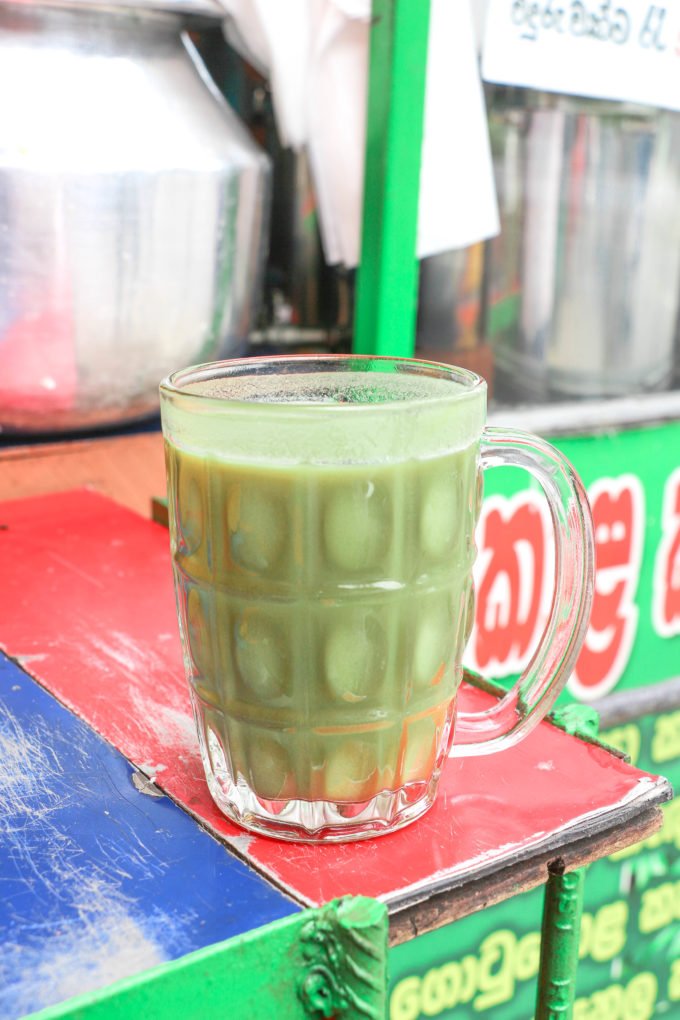
Somewhere Between a Chinese Congee and a Green Smoothie

Somewhere Between a Chinese Congee and a Green Smoothie
Kola Kenda in Sri Lanka
One morning in Nugegoda, where I walk to work every day, I came across a mobile cart under the flyover. Nugegoda is a bustling suburb in Colombo, filled to the brim with people. Teenagers flock to the city for the A-Level tuition classes that have become a trend everywhere in Sri Lanka. Tucked in a corner under the flyover, the cart is painted an intense green. The next thing that caught my eye are the words “Kola Kenda,” written in jalebi-like Sinhalese letters.
It reminded me of my Saturday mornings as a kid, when my mother used to make a steaming glass of Kola Kenda. Often, she used a mixture of leaves, usually everything available in our small garden, from Gotu Kola (Centella asiatica) to Katuwel Batu (Solanum virginianum) and Hathawariya (Asparagus zeylanicus). If that wasn’t enough, she would go to the neighbor’s for some Mukunuwenna (Alternanthera sessilis) leaves. Think of a Chinese congee and a green smoothie: Sri Lankan Kola Kenda is somewhere in-between.
“It gives you brain power,” my mother used to tell me as she handed me a glass of this herbal gruel, prepared with rice and thickened with coconut milk. A pinch of salt enhanced the flavor. Slightly bitter, with added Gotu Kola, the child in me never loved Kola Kenda.
Now, hundreds of miles from home, as I juggle student life and busy work schedule, I yearn for anything homemade. In Colombo, I struggle to find healthy food for pocket-friendly prices. When I find them, they rarely taste like my mother’s food.
Intrigued by this mobile cart, I joined five other commuters in a queue. A man in his 50, in other words, an “uncle” as we call every adult man in Sri Lanka, dished out small paper cups full of Kola Kenda. “Panahai (50 rupees),” he said him to the lady in a peacock-blue sari. That’s 30 American cents.
Unlike my mother, he makes his Kenda using only one kind of Kola (green leaves). He prepares three kinds of porridge using three varieties of herbs: Gotu Kola, Mukunuwenna, and Hathawariya.
I opted for Gotu Kola, the one with the slightly bitter taste, the one I hated as a kid. The owner had a sweet, welcoming smile, and asked me where I worked as he offered me a slice of hakuru (jaggery) for my Kenda. Sweet in taste, I take a small bite of hakuru and a sip of my Gotu Kola Kenda. The sweet hakuru blends with the slightly bitter tang of Gotu Kola. It’s a winning combination.
He usually sells out at 9 a.m. sharp, and since I work nearby, he offered to reserve me a cup every morning. “Make it two,” I told him, thinking about my colleague at the desk next to mine.
Nugegoda Flyover
High Level Road, Nugegoda
7 a.m. – 9 a.m.